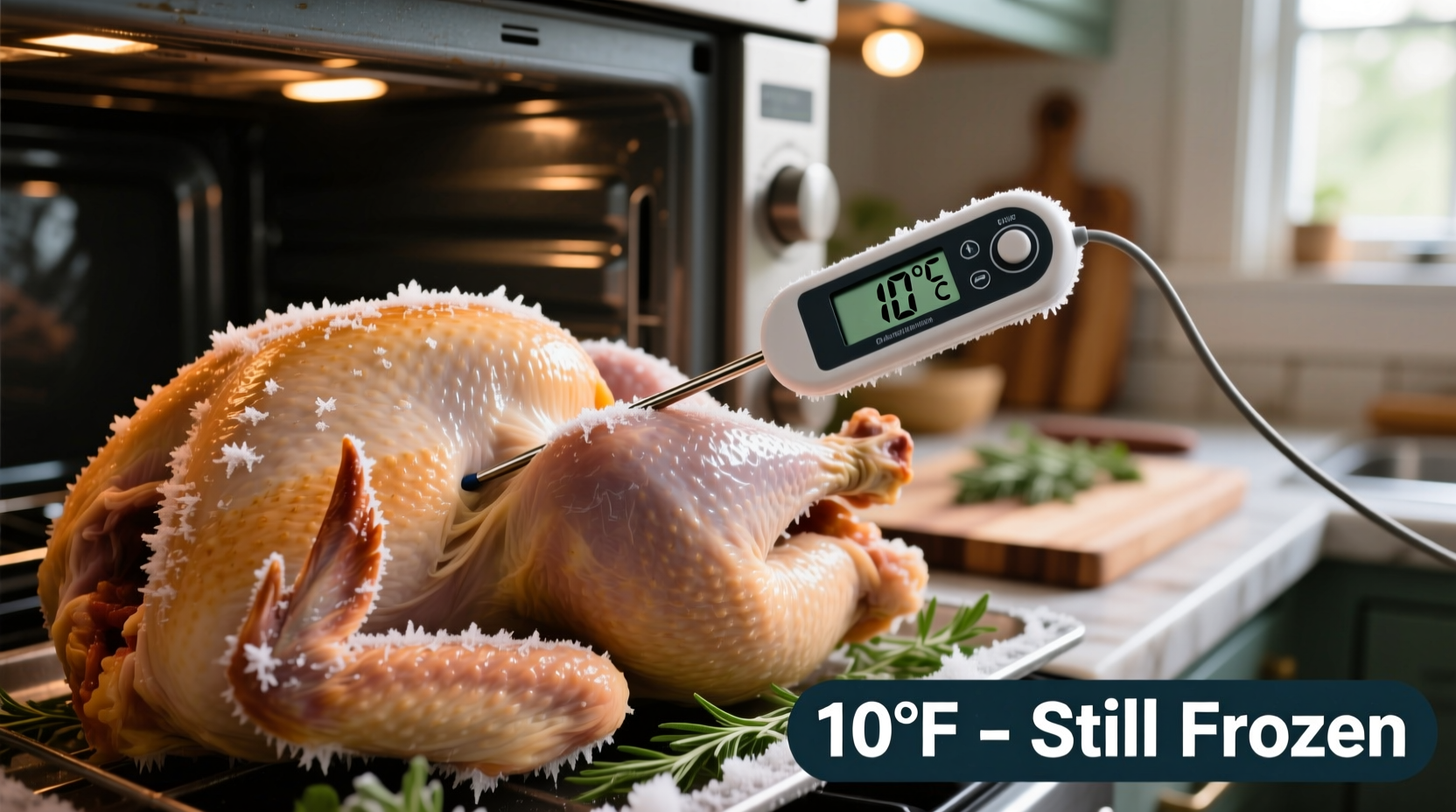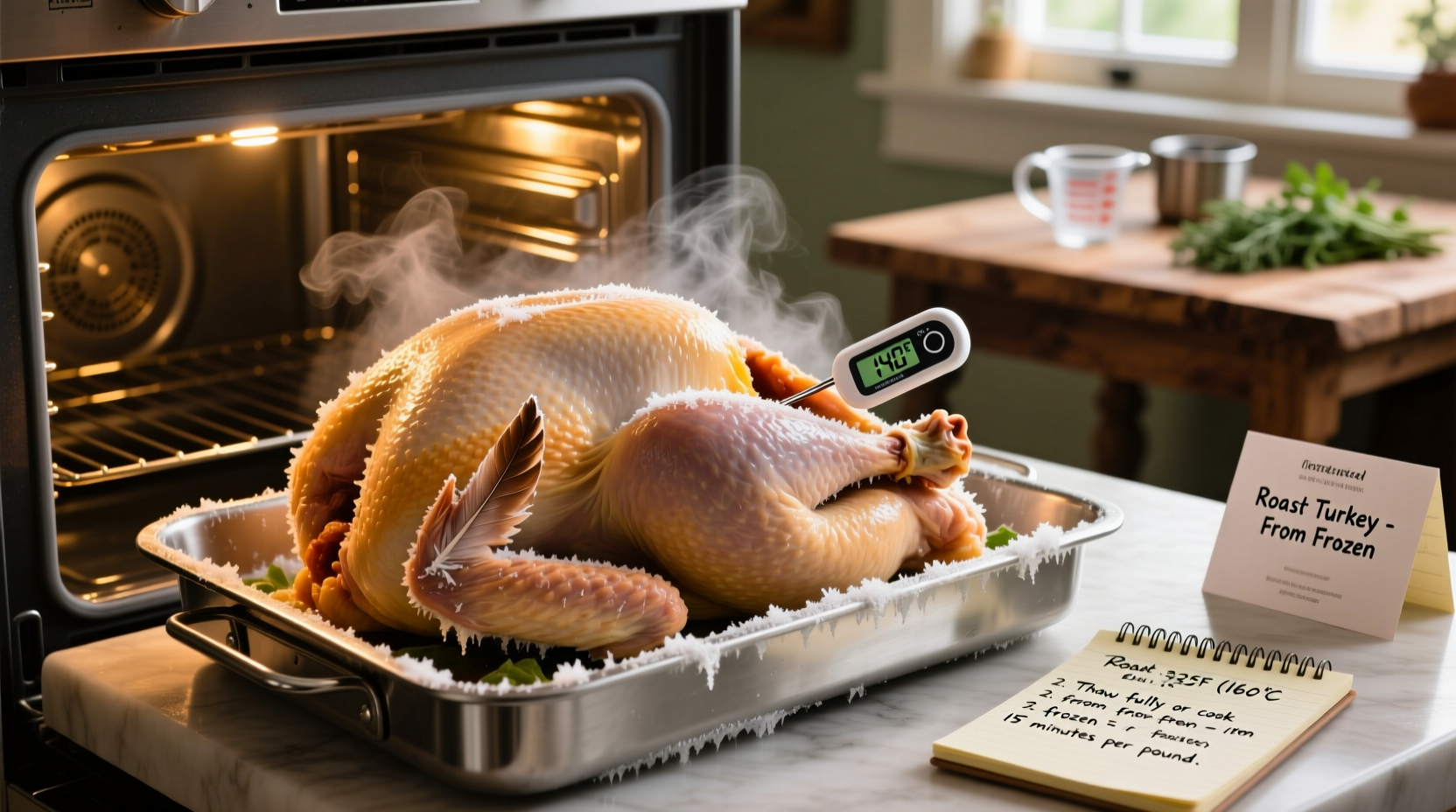The Complete Guide to Cooking a Frozen Turkey Safely
Forgotten to thaw your turkey? Don't panic. Contrary to common belief, the USDA Food Safety and Inspection Service confirms you can safely cook a turkey directly from frozen. This method requires specific adjustments to cooking time and temperature monitoring but delivers equally delicious results when executed properly.
Why Cooking Frozen Turkey Works
Modern food science demonstrates that gradual heat penetration through frozen poultry effectively kills harmful bacteria when proper temperatures are maintained. The key is extending cooking time by approximately 50% compared to thawed birds while ensuring the internal temperature reaches safe levels throughout.
| Turkey Weight | Thawed Cooking Time | Frozen Cooking Time | Temperature Setting |
|---|---|---|---|
| 8-12 lbs | 2.75-3 hours | 4-4.5 hours | 325°F (163°C) |
| 12-14 lbs | 3-3.75 hours | 4.5-5.5 hours | 325°F (163°C) |
| 14-18 lbs | 3.75-4.25 hours | 5.5-6.25 hours | 325°F (163°C) |
| 18-20 lbs | 4.25-4.5 hours | 6.25-6.75 hours | 325°F (163°C) |
Source: USDA Food Safety and Inspection Service (frozen turkey preparation guidelines)
Critical Safety Timeline for Frozen Turkey Cooking
Understanding the temperature journey of your frozen turkey prevents dangerous bacterial growth. The USDA establishes specific timeframes where your turkey must progress through critical temperature zones:
- 0-140°F (0-60°C): Must pass through this "danger zone" within 4 hours
- 140-165°F (60-74°C): Critical pathogen elimination phase
- 165°F+ (74°C+): Final safe temperature for all parts
Using an oven-safe meat thermometer placed in the thickest part of the breast (avoiding bone) ensures accurate monitoring throughout the cooking process.

Step-by-Step Frozen Turkey Cooking Method
Preparation Phase
Remove all packaging materials, including the giblet bag from the cavity. Place the frozen turkey breast-side up on a rack in a roasting pan. Do not rinse the turkey—this spreads bacteria. Pat the exterior dry with paper towels to promote even browning.
Cooking Process
- Preheat oven to 325°F (163°C)—never higher to prevent exterior burning
- Insert oven-safe thermometer into thickest breast area
- Cook uncovered for first 2 hours to allow surface moisture evaporation
- After 2 hours, loosely tent breast area with foil if browning too quickly
- Calculate total cooking time using the USDA table above
- Check internal temperature 1 hour before estimated finish time
Alternative Cooking Methods for Frozen Turkeys
While traditional roasting works best for frozen birds, these adaptations can improve results:
- Spatchcocking: Removing the backbone and flattening the turkey reduces cooking time by 25-30% while promoting even heating
- Roasting Bags: Creates steam environment that speeds cooking but requires careful monitoring to prevent over-browning
- Slow Roasting: Cooking at 250°F (121°C) for extended periods allows more gradual heat penetration
Essential Food Safety Checks
Before serving, verify these critical safety points:
- Internal temperature reaches 165°F (74°C) in breast, thigh, and wing joints
- Juices run clear with no pink tinge
- Meat separates easily from bone
- 15-minute resting period after removal from oven
The National Turkey Federation emphasizes that visual cues alone aren't sufficient—always verify with a calibrated thermometer. Undercooked frozen turkey poses serious salmonella risks due to uneven heat distribution.
Troubleshooting Common Issues
Problem: Darkened exterior before interior cooks
Solution: Cover with foil after initial 2-hour period. Reduce oven temperature by 25°F if browning accelerates.
Problem: Extended cooking time without temperature rise
Solution: Verify oven temperature with independent thermometer. Check for thermometer placement near bone or in fat pocket.
Problem: Dry breast meat
Solution: Baste during last hour of cooking. Consider butter-under-skin technique after initial 2 hours when surface has set.











 浙公网安备
33010002000092号
浙公网安备
33010002000092号 浙B2-20120091-4
浙B2-20120091-4